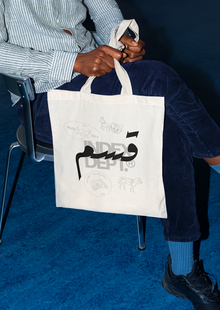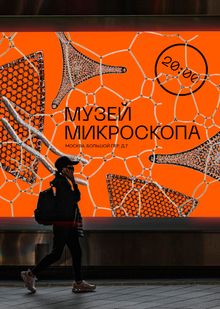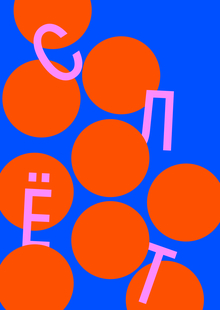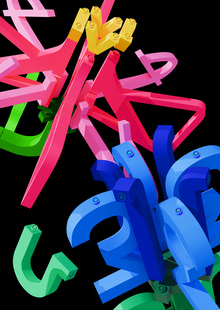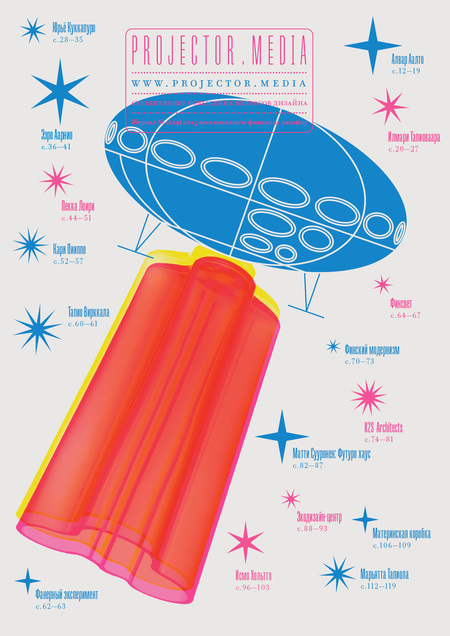
«Projector» magazine. Issue #29
This time Projector is dedicated to Finnish design from A to Z. The editors can’t have left behind such a grand-scale news hook as the exhibition Golden Generation. Modernism in Finnish Architecture and Design, held in the Hermitage in winter 2015—2016, so the cover is decorated with the two iconic items. These are Futuro House by Matti Suuronen and the vase by Alvar Aalto — probably, the two most recognizable silhouettes in the history of Finnish design. And, although Aalto created his vase in the mid 1930s, and Suuronen came up with the idea of Futuro in the late 1960s, both objects are still live and relevant, as, in fact, many more items created by Finnish designers.
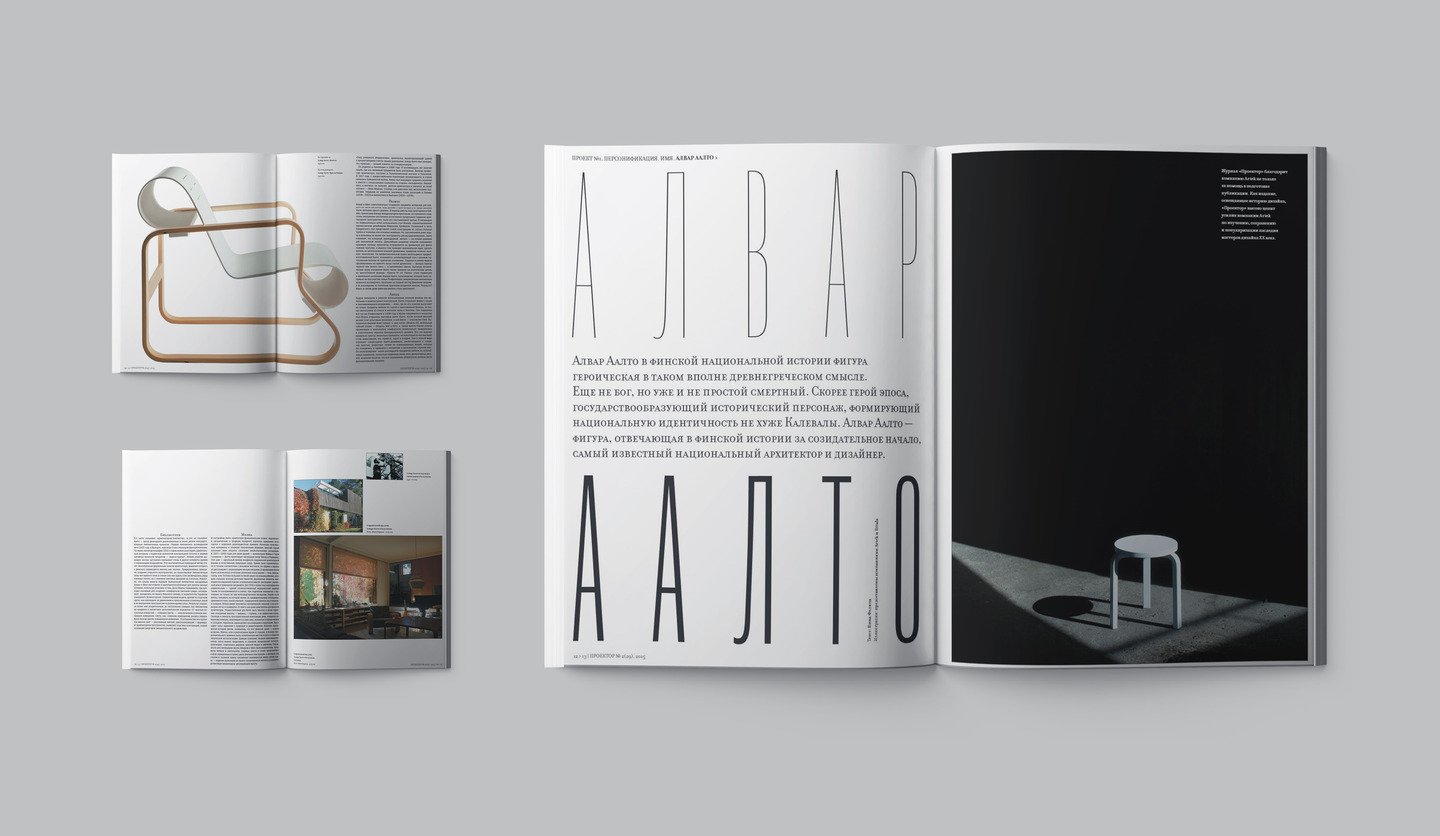
«World War II became a borderline between the radical modernists, eager to create a functional „residential space machine“, and the post-war designers equipped by the latest technologies, bringing industrial design to a new level. The new generation considered it from a consumer’s perspective, and attempted to tackle every challenge of creating a marketable product. Ilmari Tapiovaara became the most significant designer at the time», — says Pavel Ulyanov.
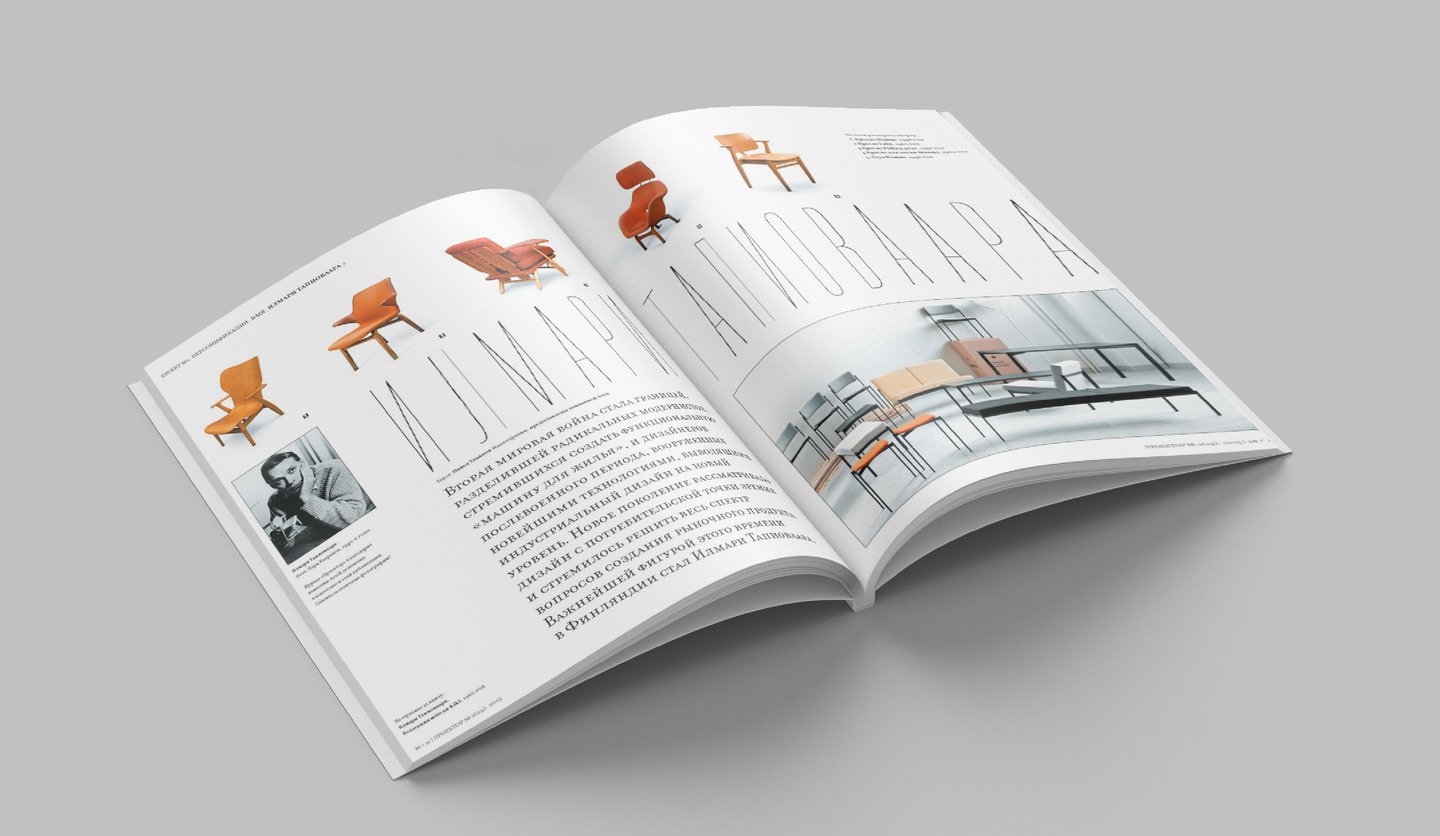
Yrjo Kukkapuro, the founder of Finnish design, and a person who got into the profession in the mid 1950s, welcomed us at his house, which resembled of a UFO rather than a cottage in a nice countryside of Helsinki. Yrjo designed and constructed his home back in 1968. He and his wife have been living and working here for over 40 years so far. Nowadays the single space under a sophisticatedly curved roof is full of Yrjo’s works, both mass-produced and existing as prototypes only. Looks like a real museum!Read more in the interview with Yrjo Kukkapuro.
I believe everyone can remember the Men in Black scene when Will Smith, taking a series of M.I.B. tests, pulls a table with an awful scrape and sits down in a futurist egg-shaped armchair. The movie appeared in the late 1990s, but the armchair was designed by Eero Aarnio as long ago as 1963!For over fifty years, it has remained an unchanging symbol of the future. Eero says, «I have never lacked offers after that success!»
Pekka Loiri and Kari Piippo, the two main poster designers in Finland, are featured in this month’s column on graphic design. We’ve had an interview with both of them. «I was once asked in Bogota during my exhibition: „Why do your works have so much yellow?“ I’d never thought of it, but the answer came to me just at once — we live in the north, and yellow means the sunshine we are deprived of. I love yellow. I sometimes add it for no reason at all, ” said Pekka Loiri. He also told us about his relationships with customers, managing the studio, and being the owner of an island in East Finland.
Kari Piippo: «A poster is a way to educate and warn the audience. However, it’s not meant to solve the problems it brings up. It only reflects current issues in a concise and expressive manner. The most efficient posters are the ones that encourage people to act. They illustrate burning issues and at the same time share people’s hopes and expectations. The vivid images in the posters shape today’s reality and reveal current tendencies in the society».
Speaking of object design, we now move on to Pavel Ulyanov’s story about one of the items in his collection — Puukko snee by Tapio Virkkala: «Puukko is neither a weapon nor „a samurai’s soul“, but a comfortable and efficient tool which helped northern people to survive in a severe environment. Since their childhood, Finnish boys would learn to use the snee by cleaning fish, gutting poultry, or carving wood. For this, there was a small-sized knife with a short blade and elongated handle, which allowed to hold it in a number of ways».
Next come two more objects from Pavel’s collection: the plywood armchairs, now exhibited in Concorde Gallery. «In 2013, wandering around Antique Salon in Helsinki, I spotted a pair of plywood armchairs buried under a lot of carpets and lamps. Their uncommonness and my curiosity doomed me to become the owner of these artifacts. Now, let’s try to identify their origin…», writes Pavel.
My friend, colleague, and the partner of Projector, is here with his own digest on a number of selected objects by Finnish designers. Read about designer lamps from Finland in Konstantin Tsepelev’s article «Finnlight».
The project Environment starts with the text by Ksenia Malich, the curator of Golden Generation: she breaks down the basics of Finnish modernism. «There’s a Finnish proverb: „You don’t have to think fast, but you must express yourself clearly“. By contrast with other countries, clarity, purity and austerity of early European modernism was considered by the Finns not just as the part of a revolutionary manifesto, but an urgent need, and a tribute to their own traditions in architecture. This is especially vivid if we look at the Finnish architecture of the 1920s, before the language of „white functionalism“ was formed».
«It all started in 1965, when Matti Suuronen was offered to design the Ski cabin, a leisure base for mountain skiers. The prototype had been constructed by 1968. It was an ellipsoid capsule of sixteen fiberglass panels. Each panel was insulated with a layer of expanded polystyrene. The construction involved sixteen ellipsoid illuminators. That wasn’t just a whim — an ellipsoid is able to withstand a significant load of snow and strong gusts of wind. The Space Race of the 1960s set the visual simularity between the building and a spacecraft in many other details — for example, there is a kind of an air stair to enter it. The polymeric capsule was placed onto a steel four-pylon base, resembling of a science-fiction UFO», says Pavel Ulyanov.
I had always wanted to meet the members of K2S Architects for an interview. To my mind, this is the smartest architecture studio in Finland. Long ago, walking around Helsinki, I felt I needed to talk to the authors of the Kamppi Chapel, and I have finally managed to do it. We met at their new and wonderful object — the floating office of Arctia, which is the largest floating building in Finland.
Pavel Ulyanov: «Hölttö has always been extraordinarily creative, he earned a living by winning grants, published his own photoalbums — there are five of them so far. In April 2015 the Ateneum in Helsinki opened a personal retrospective of Ismo Hölttö 1962 to 1971 — this is the evidence of the highest recognition in motherland. Ismo stopped shooting in the 1980s, nowadays he is mostly working with his archives. He can’t keep up with the pace of the XXI century, and feels more comfortable in his own studio, surrounded by vintage bits and pieces, which slow down the time at least visibly. Today Ismo’s glance looks like the glances of the characters in his photos, who are looking into nowadays out of the eternity».
From our point of view, the student project of utmost importance we noticed this month is Mothercare Box, made by KELA, the state social insurance agency of Finland, and the students of Aalto University under the tutelage of Marjatta Itkonen. Mothercare Box has been one of the important programs by KELA since 1937 года. Anyone in Finland, who’s going to have a baby, gets a heartwarming gift from the state — a box of all the essentials for a newborn including clothes, care products, and many more. For many years, this used to be the only program of this kind in the world. The students of Art and Design facultee were offered to create a new design for Mothercare Box.
The issue ends with the interview Olga Ryabukhina did with the artist Marjatta Tapiola. «Marjatta Tapiola is number one artist in Finland. Two years ago the parliament of the country acquired the President’s portrait, written by her. Marjatta depicted the head of the state reading a book about the history of Russian literature. The artist is truly interested in Russia: she’s learning the language, loves Akhmatova, listens to gypsy songs and Stravinsky; in her adulthood, she converted to Russian Orthodox. Marjatta first made a name for herself in the 1970s by huge and incredibly impulsive for the Finnish art scene canvases of conceptual expressionism».
